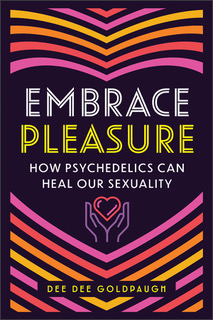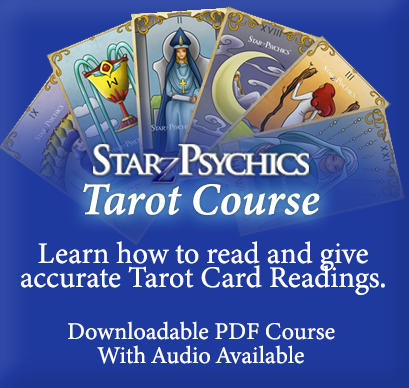- Home
- Editor's Notes
- Current Issue
- Riki Reflects
- Spiritual Traveler
- Starz Emporium
- Classifieds
- Advertise with Us
- Submissions
- Awards
- About Us
- Contact Us
Embrace Pleasure
By Dee Dee Goldpaugh
 INTRODUCTION Things to Know before You Begin Reading THIS BOOK IS THE CULMINATION of a personal healing journey of over twenty years from trauma to transcendence; from isolation to connection; from numbness to being in touch with true pleasure. Western psychotherapy, spiritual practice, and loving relationships all had a role to play in my healing from sexual and relational abuse in childhood and sexual assault as an adult. But nothing has ever been capable of helping me feel, express, move through, and ultimately reconnect to pleasure in the way psychedelic medicines have. I believe this level of healing should be accessible to everyone who wants it. This book is a deeply personal expression because it is a reflection of the most profound healing I’ve experienced that I hope to share with others. Likewise, these ideas are also drawn from over seventeen years of professional experience as a psychotherapist supporting the healing of my clients. My training background is in somatically oriented trauma therapies including Internal Family Systems (IFS), Eye Movement Desensitization and Reprocessing (EMDR), sex therapy, and also in psychodynamic psychotherapy and relational therapies. I am also a ketamine-assisted psychotherapist and an expert in psychedelic integration psychotherapy, having developed and published specific techniques for sexual trauma survivors. This book is born into a moment that is a turning point in the history of psychedelic medicines, and the messages contained within have no easy place in the corporate world of medicalized psychedelics which is becoming the dominant paradigm in the West. Readers interested in healing their sexuality, connecting more deeply to pleasure, experiencing more satisfaction in their lives, and who are interested in what role psychedelics might play in that process are the audience for whom I’m writing. However, it’s important to know this book is written with the assumption the reader may have some experience with or preexisting knowledge of psychedelics. If you are just starting your exploration of these medicines, or are new to learning about emerging mainstream psychedelic science and the contexts in which it occurs, you may want to first pause and read the glossary of this book, where key concepts in psychedelic research and theory are defined. There are also many wonderful books and websites for learning the very basics about psychedelic medicines and healing. This book is not an attempt to replicate existing foundational texts in this field. My aim in writing this book is to contribute to a psychedelic philosophy of pleasure, as well as offer a critical analysis of, and insights into all that is emerging in the field of psychedelic science. I hope that it will provoke thought, as well as provide useful tools and perspectives for your own healing journey. This book is not medical advice. It’s intended to be information for all people seeking a deeper relationship with pleasure, survivors of sexual and relational trauma, and therapists who wish to offer support to their clients, more holistically empowering them to become active agents of their own healing. In the same spirit, this book is not a how-to on healing your trauma with psychedelics without clinical support. The support of highly trained therapists is often needed to heal severe sexual and relational trauma. The case vignettes that appear in this book are all composites from multiple people. No vignette represents a single individual (with the exception of the first-person accounts, all printed with full informed consent of all contributors that appear in chapter seven). The work that happens in the context of therapeutic confidentiality is sacred. The truth is, no one client ever has a story that is not mirrored in others as well. To protect the identities and stories of the people I’ve worked with, each vignette is a work of fiction inspired by, but removed from, real life. I am a white, non-binary, queer, trauma survivor who grew up in an environment of financial disadvantage and have now attained education and stable income. As a white person living in the West, I will have blind spots in my perspective and analysis. I want to be clear that I do not presume to speak for the experience of marginalized individuals from communities to which I do not belong, and, while I offer thoughts and commentary on the experience of marginalized individuals from communities to which I do belong, no group is a monolith; the complex, intersecting dynamics of power, privilege, discrimination, and other social/cultural forces makes it impossible for me to speak on behalf of all individuals who happen to share a group identity. It is important to acknowledge however the erasure of certain groups of people (such as BIPOC, disabled or queer people, for example) from contemporary psychedelic research. Many research studies often do not even ask questions that would help differentiate responses to psychedelics in these groups of people, so we really don’t know if there are indeed differences that can be illuminated through study. In any discussion of healing from trauma, it is important to acknowledge the discrimination, violence, and increased risk of trauma that members of these and other traditionally marginalized communities have faced and continue to face, which adds to the challenges some people have in feeling safe. Believing we can “cure” depression and anxiety with psychedelics while neglecting to address systemic injustices stemming from the forces of racism, unbridled capitalism, patriarchy, misogyny, colonization, homophobia, transphobia, fatphobia, a Western model of science and medicine characterized by materialist reductionism, and extremist movements such as white supremacy and religious extremism (the list goes on and on) will leave us traumatized and isolated, and are doomed to fail. While I have touched on some of these forces throughout the book, it is impossible to incorporate a full discussion into the complexities surrounding each. It is my hope therefore that diverse future writers continue with this discourse and help it to evolve. All that being said, while I advocate for a more holistic approach to use of psychedelics, I write from within the cultural context I am situated. While I have made efforts to highlight the research and perspectives of people from traditionally marginalized groups, it is important to note that because the history of Western psychedelic science and research has largely been shaped by white, Western men, I have necessarily relied on the work of many of them to support my endeavor in writing this book. As I say in chapter six: “You can’t put toothpaste back in the tube. Here we are. We can only do everything in our power to act ethically given the current circumstances.” It is also important to note that when I use the term “psychedelic science” I am referring to the contemporary Western endeavor of intense research into the use of psychedelics for healing here in the West. While some psychedelics are Western inventions (usually lab-created), plant medicines have a long history of use by Indigenous people, and as such, their use deserves special consideration. While cultural appropriation is a topic worthy of consideration, and while it is difficult to define what avoiding it looks like in practical terms, I believe it is incumbent upon non-indigenous users to consider how they might engage with these medicines in a way that is equitable and enhancing to the community and lineage holders of the medicine, ask questions about whether the work is carried out in a sacred and respectful way, and make an effort to minimize harm to the environment and surrounding communities. Evgenia Fotiou says it best when she says: “Indigenous peoples are not a-historical others but historical agents here and now. Superficial representations of Indigenous peoples and their knowledge systems only cause further trauma. When using plants that have been previously used by Indigenous peoples, at the very least they should be consulted about respectful ways of using them.”1 Whenever you see me referring to an individual using the pronouns “they/them,” it is because the individuals I am referring to have specified that they prefer use of these pronouns when referring to them in the third person. Also, throughout the book the term “man” or “male” and/or “woman” or “female” includes all male-identified and female-identified people respectively. As I write, all life forms on our planet are experiencing the hottest temperatures ever recorded. Extreme weather has marked the past few months around the globe. We caused this, and it will take massive, extreme collective action not just on the part of individuals, but of corporations and governments to slow down the death rattle of our home planet. She is dying before our eyes. If you’ve ever attended to the bed of a dying person, a wonderful and mysterious thing can happen. The edges soften. Family members who could not get along find their deeper purpose and put strife aside. Tones are hushed and arguments cease. We understand that we are in the presence of a great transition when someone we love is dying. Grief holds the power to garner perspective and to open our hearts to the present moment. That is the energy I wish to carry into this book. As I sit writing on this dying Earth, I let my heart be softened, filled with compassion. I feel a renewed call to explore pleasure and healing, not just for its own sake, but because connection with our bodies, with our loved ones, our hearts, and the Earth herself is what this moment requires of us. I hope this book and the medicines that this great Earth has offered us, both through science and through plants and animals, can be used to support a shift toward pleasure, healing, and toward love. .jpg) Author Bio: Dee Dee Goldpaugh is a psychotherapist, educator, clinical supervisor, consultant, and leading voice in the development of psychedelic integration psychotherapy, specifically with survivors of sexual trauma. Goldpaugh is a facilitator of ketamine-assisted retreats for both couples and individuals and has taught and published widely on psychedelics and sexuality, trauma, gender, and spirituality. A frequent presenter at international conferences and trainings, Goldpaugh lives in Woodstock, New York. deedeegoldpaugh.com Embrace Pleasure by Dee Dee Goldpaugh published by Inner Traditions International and Bear & Company, © 2025. All rights reserved. https://www.Innertraditions.com Reprinted with permission of publisher. |
Share this article with friends!
|
Copyright © 1998 - 2025 Mystic Living Today All rights, including copyright, in the content of these Mystic Living Today web pages are owned or controlled for these purposes by Planet Starz, Inc. Terms of Service Disclaimer and Legal Information For questions or comment, contact Starzcast@mysticlivingtoday.com. Reproduction of this page in any form is not allowed without permission of the author and the owner of this site. All material on this web site, including text, photographs, graphics, code and/or software, are protected by international copyright and trademark laws. Unauthorized use is not permitted. You may not modify, copy, reproduce, republish, upload, post, transmit or distribute, in any manner, the material on this web site. Unless permissions is granted. |



